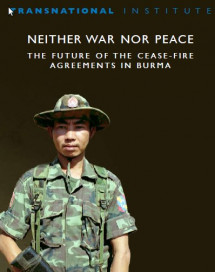Burma: Neither War Nor Peace The Future Of The Cease-Fire Agreements In Burma
Regions
Whilst a twenty year ceasefire still holds, there is unlikely to be peace and democracy in Burma without a political settlement that addresses ethnic minority needs and goals.

This year marks the twentieth anniversary of the first cease-fire agreements in Burma, which put a stop to decades of fighting between the military government and ethnic armed opposition groups. This paper explains how the cease-fire agreements came about, and analyses the goals and strategies of the cease-fire groups.
This year marks the twentieth anniversary of the first cease-fire agreements in Burma, which put a stop to decades of fighting between the military government and a wide range of ethnic armed opposition groups. These groups had taken up arms against the government in search of more autonomy and ethnic rights. The military government has so far failed to address the main grievances and aspirations of the cease-fire groups. The regime now wants them to disarm or become Border Guard Forces. It also wants them to form new political parties which would participate in the controversial 2010 elections. They are unlikely to do so unless some of their basic demands are met. This raises many serious questions about the future of the cease-fires. The international community has focused on the struggle of the democratic opposition led by Aung San Suu Kyi, who has become an international icon. The ethnic minority issue and the relevance of the cease-fire agreements have been almost completely ignored. Ethnic conflict needs to be resolved in order to bring about any lasting political solution. Without a political settlement that addresses ethnic minority needs and goals it is extremely unlikely there will be peace and democracy in Burma. Instead of isolating and demonising the cease-fire groups, all national and international actors concerned with peace and democracy in Burma should actively engage with them, and involve them in discussions about political change in the country. This paper explains how the cease-fire agreements came about, and analyses the goals and strategies of the cease-fire groups. It also discusses the weaknesses the groups face in implementing these goals, and the positive and negative consequences of the cease-fires, including their effect on the economy. The paper then examines the international responses to the cease-fires, and ends with an overview of the future prospects for the agreements. To order a hard copy you can go to our online shop: https://tnishop.org/products/neither-war-nor-peace
Pages: 40